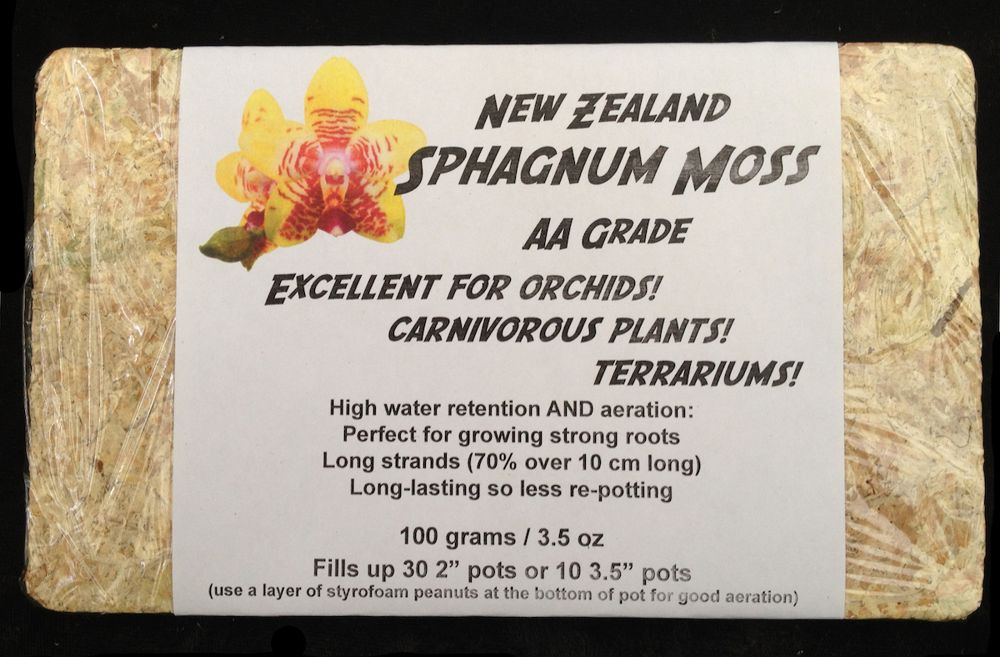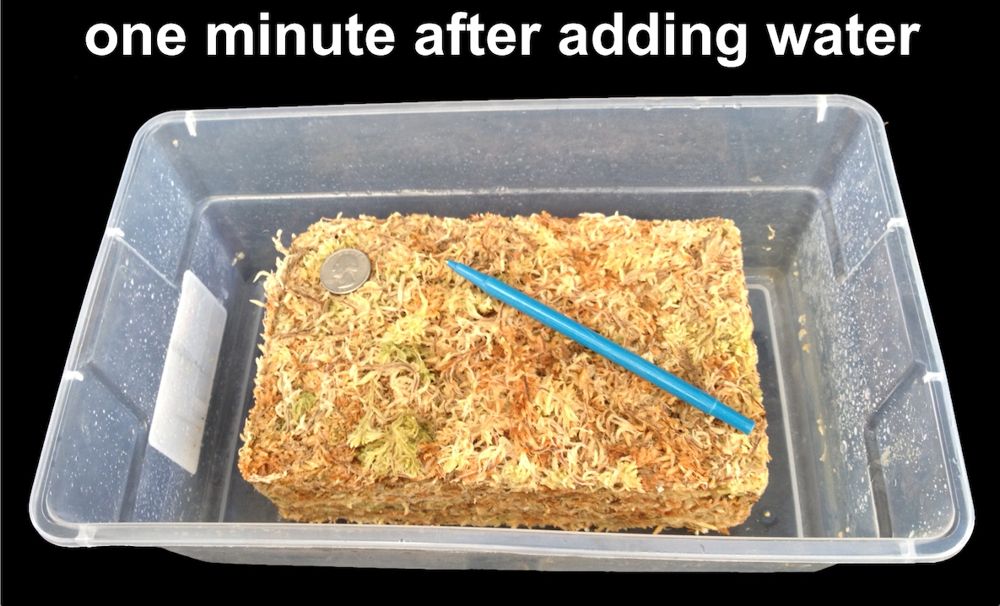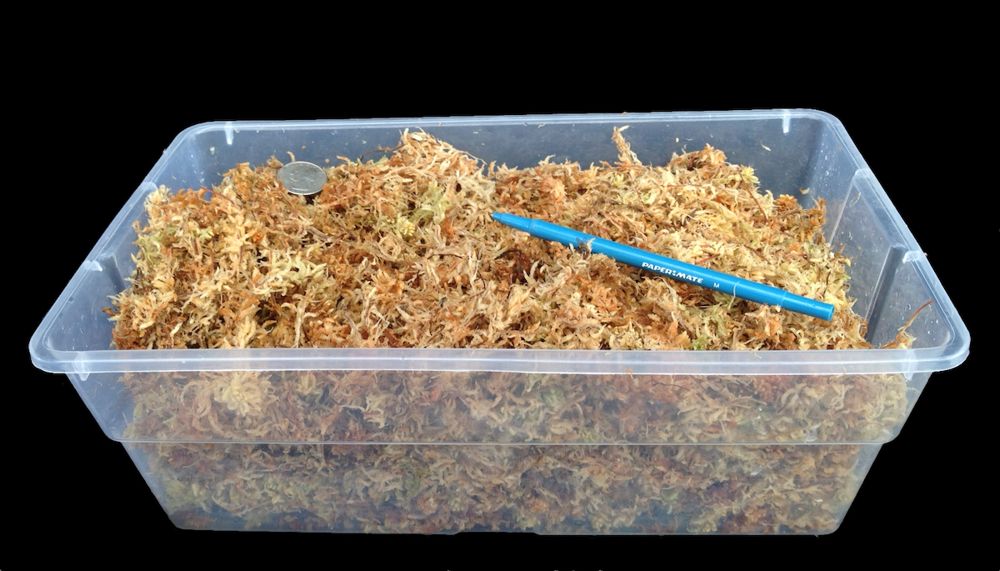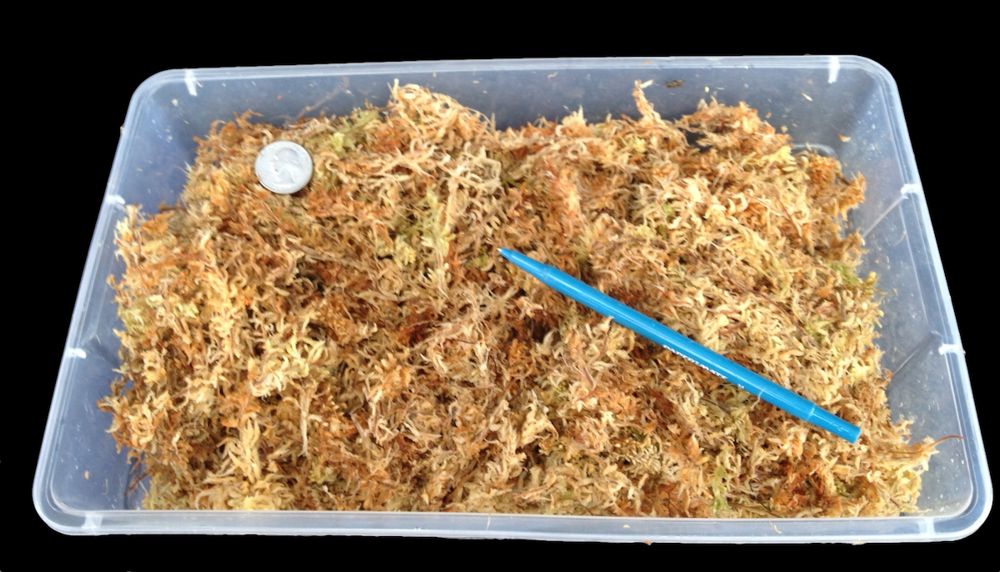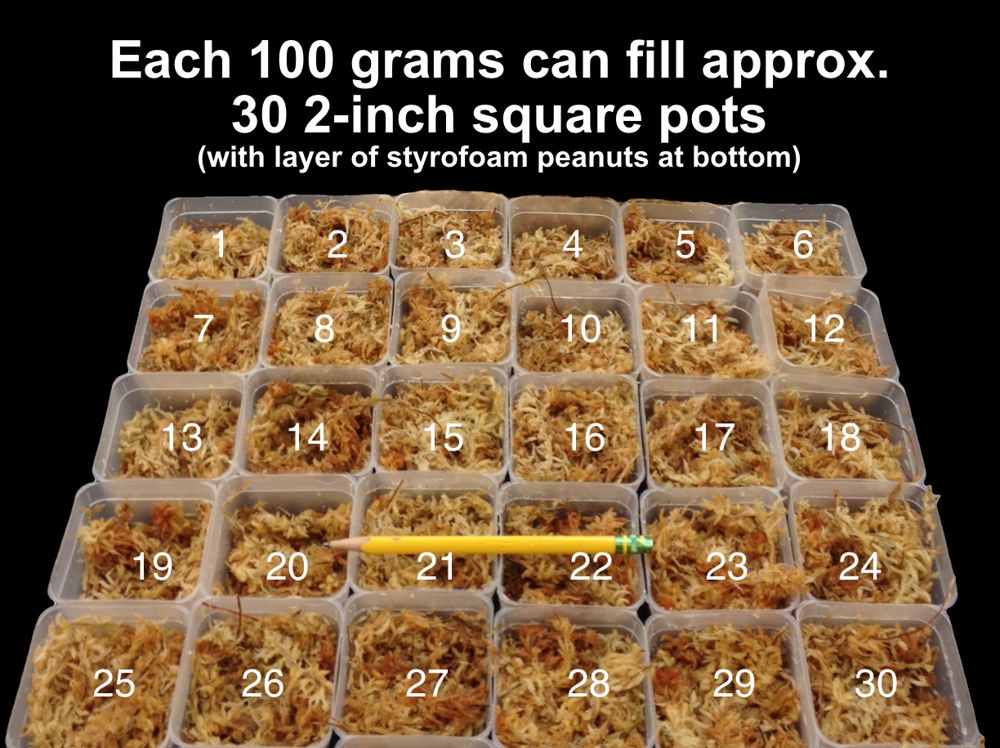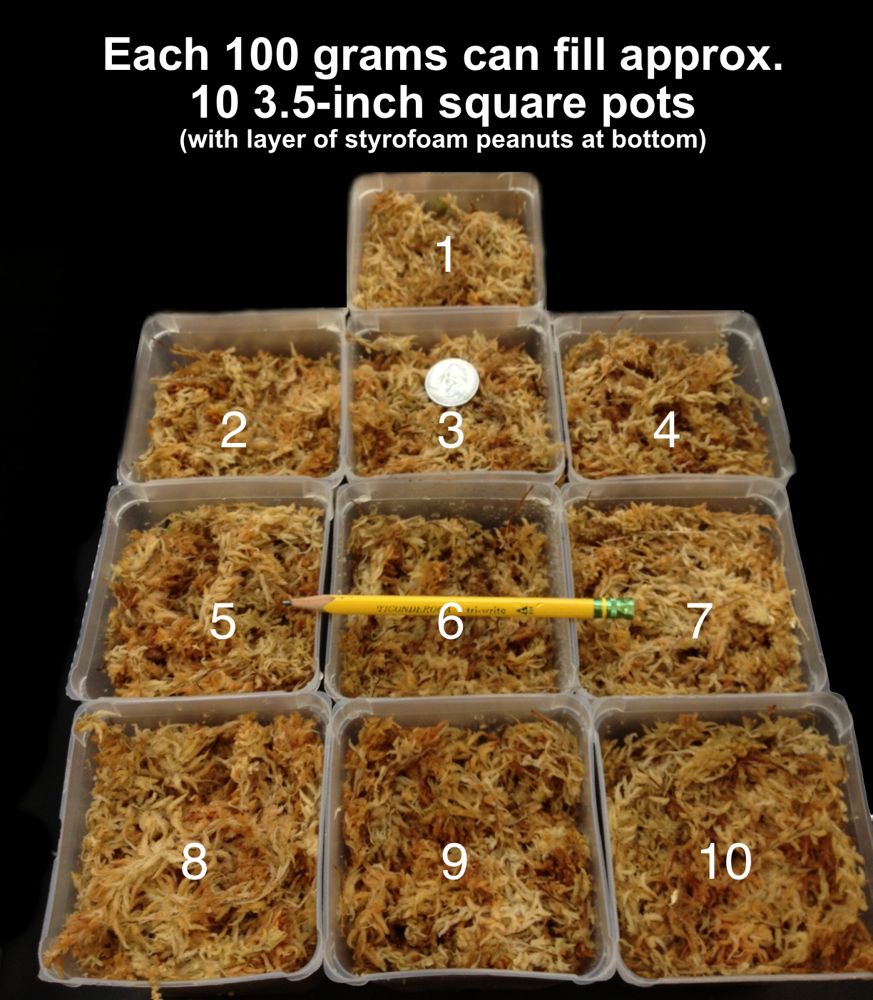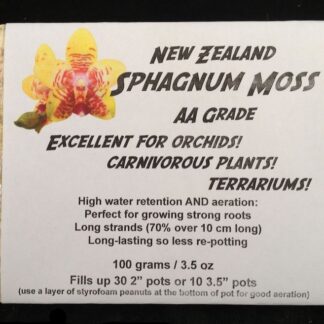Description
This sphagnum moss comes comes from New Zealand, the source of the finest sphagnum moss in the world.
Sphagnum moss is excellent for growing orchids for many reasons:
1) It retains moisture, and can hold many times its weight in water. What this means for your orchids is that as soon as they put out roots, the root tips are comfortably ensconced in moist organic material that support their continued growth. That means your orchids grow healthier and stronger!
2) Sphagnum moss also has another excellent property: its springiness. This springiness means that it retains AIR SPACE at the root zone, which is absolutely critical for orchids. Orchids are typically epiphytes (growing on trees or other support structures) and often have aerial roots. These roots need to have the flow of air molecules past them, or they will suffocate/drown. (That’s why you don’t grow orchids in dirt: it suffocates the roots, leading to a dead plant!). The springiness of sphagnum creates air space around the roots, an ideal environment for robust root growth. Strong roots mean strong and beautiful orchids!
3) Sphagnum moss also has antimicrobial properties, which can enable it to fight off pathogens that might infect your orchids! Did you know that in World War 1, bandages were prepared from cleaned sphagnum moss because of its ability to absorb wound fluids AND limit infection? Using sphagnum moss around your orchids can help to limit bad fungi and bacteria that might weaken your prized orchids.
4) For recovering rootless orchids, nothing works as well as moist sphagnum. Wrapping the base of your struggling plant in high quality sphagnum moss and keeping your plant in a humid environment with air flow will greatly increase the chances of your plant surviving. When a plant has lost its roots, it knows what to do — make new roots! But it is in a struggle against time because what water it has retained in its leaves will transpire (i.e., evaporate) through the leaf surfaces. So keeping a plant in a humid environment enables the plant to retain more of its internal moisture, and even absorb some from its leaves until it can grow new roots. Sphagnum moss greatly aids in this process because it can help to maintain a humid environment around the plants due to its large surface area, water retention ability, and porous structure.
5) Long fiber sphagnum moss allows you to wrap your plants in moss right were the roots emerge. When you use lower quality moss, the moss tends to drop off and fall away from the plants. It is no surprise that top Japanese growers of the samurai orchid, Neofinetia, use long fiber sphagnum moss around the base of their precious orchids, which can be valued over $10,000 USD! Don’t your plants deserve the same care?
6) Many plants grow extraordinarily well in this moss, including:
Miniature Dendrobiums (i.e., cuthbertsonii, laevifolium, aberrans, aphyllum)
Mid-sized Dendrobiums (i.e., kingianum, speciosum, victoria-reginae, sanderae, etc.)
Bulbophyllums
Epidendrums
Lycastes
Masdevallias (can be grown exceptionally well when potted in sphagnum moss in unglazed pots)
Neofintia
Oncidiums and intergeneric hybrids
Phalaenopsis
Paphiopedilums (for growing roots and recovering plants)
Phragmipediums (for growing roots and recovering plants)
Carnivorous plants do well, too:
Nepenthes
Pinguicula
Drosera
Venus Fly Traps
7) NZ moss can last 12 – 18 months or even longer, depending on how often you water (the more water, the faster any media will break down). Certain types of orchids will continue growing just fine even in sphagnum moss older than 18 months!
